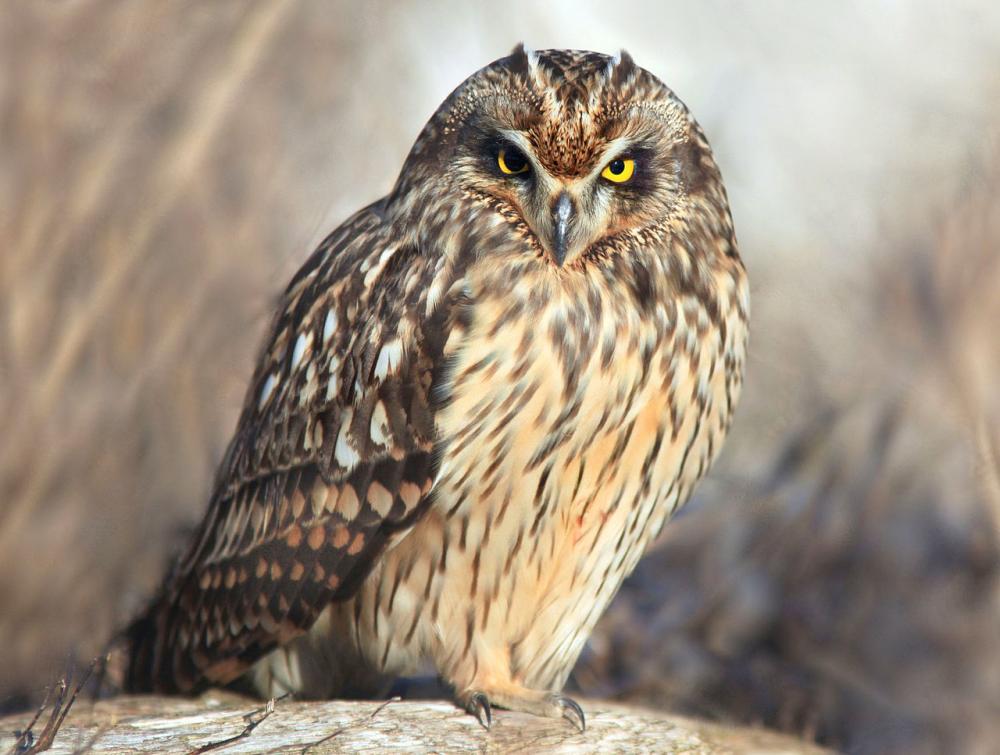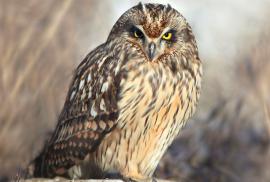Guide to Boreal Birds
Overview
This owl is most commonly seen late in the afternoon as it begins to move about in preparation for a night of hunting. It can often be identified at a great distance by its habit of hovering; its flight is erratic and bounding. Occasionally several birds may be seen at once, an indication that small rodents are especially numerous.
Description
16" (41 cm). A crow-sized, long-winged owl of open country. Tawny brown with rather heavy streaks below; blackish patch around each eye. Very short ear tufts are rarely visible.
Voice
Usually silent; on nesting grounds, a variety of barks, hisses, and squeals.
Nesting
5-7 white eggs in a grass-lined depression on the ground, often concealed in weeds or beneath a bush.
Habitat
Freshwater and salt marshes; open grasslands, prairies, dunes; open country generally during migration.
Range/Migration
Breeds from Alaska across Canada south locally to California, Kansas, and New Jersey. Winters in southern part of breeding range and south throughout United States to Central America. Also in South America and most of Old World.



